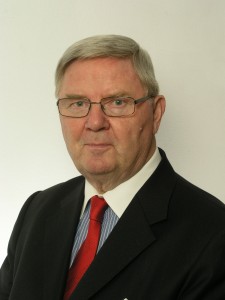Finland faces challenges in DVB-T2 migration
 Finland’s planned migration of its digital-terrestrial platform to the DVB-T2 standard and the more efficient single-frequency network (SFN) system faces a number of challenges and considerable uncertainty as to timing, according to Tauno Äijälä, member of the board at commercial broadcaster MTV Media Finland.
Finland’s planned migration of its digital-terrestrial platform to the DVB-T2 standard and the more efficient single-frequency network (SFN) system faces a number of challenges and considerable uncertainty as to timing, according to Tauno Äijälä, member of the board at commercial broadcaster MTV Media Finland.
Äijälä, speaking at the IP&TV World Forum yesterday, said that a number of issues were likely to bring delays to the migration.
The Finnish government has given telco DNA and DTT broadcaster Digita permission to offer services using the DVB-T2 standard, with the latter permitted to migrate for former DVB-H service to the new standard. However, while DVB-T2 services are VHF-based, people who had VHF aerials have largely replaced these with UHF equipment that is compatible with DVB-T broadcasts, said Äijälä. Additionally, transmissions from DNA and Digita come from different transmitters, requiring separate aerials, or dual-feed aerials, to pick up their signals, he said.
Finland is currently transmitting 12 DVB T2 HD channels, out of a total of 63 channels. About 20% of Finnish households have access to DVB-T2 services and DVB-T2-based HD services have a 3% share of viewing. The Finnish government yesterday issued three more licences for the DVB-T2-based multiplex F on the country’s digital-terrestrial platform.
A DVB-T2 migration programme should be prepared by the government this spring. According to Äijälä, it is however likely to recommend that there should be a compulsory switchover to DVB-T2 in the foreseeable future. Finland achieved DVB-T digital switchover was achieved in 2007 and few people are aware of T2, according to Äijälä. DVB-T signals will be continue to be transmitted until at least 2016, so there is no immediate need to make the switch to the new standard. Äijälä said that the country’s current network and broadcaster licences, with one exception, are set to expire at the end of 2016, after which a faster migration could be implemented.
Äijälä said that the government had plans to implement a programme to reduce regulation and improve the effeciency of DTT by moving from multi-frequency network (MFN) to SFN transmission between 2017-26.
However, although the country will move to SFN, at least one MFN multiplex will be required to enable local opt-out programming and local advertising. Four digital multiplexes will ultimately be developed to cover the entire country, said Äijälä.



